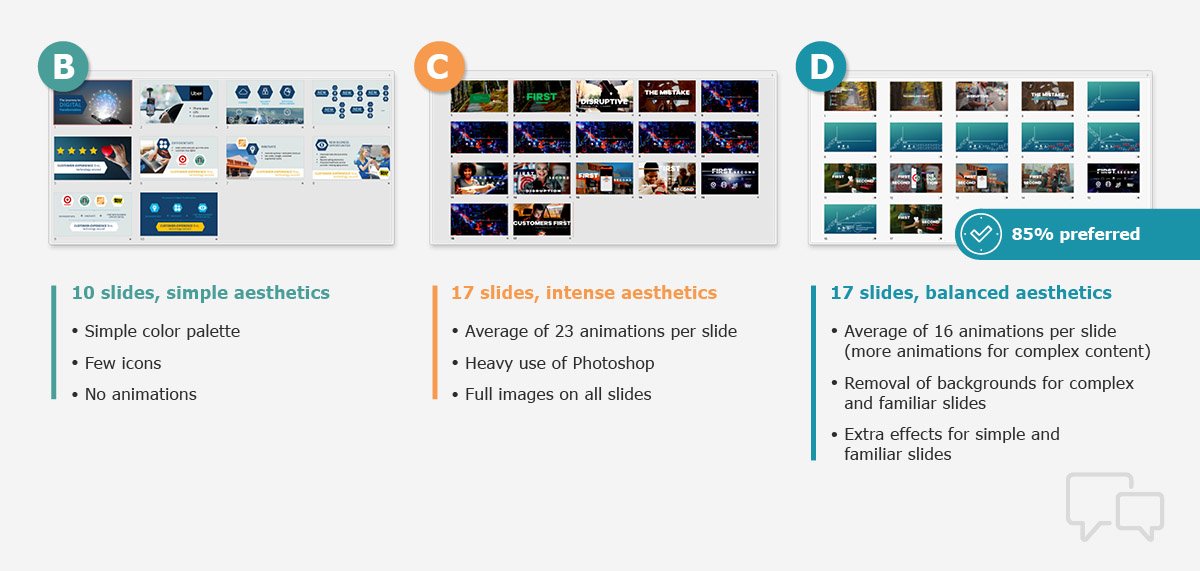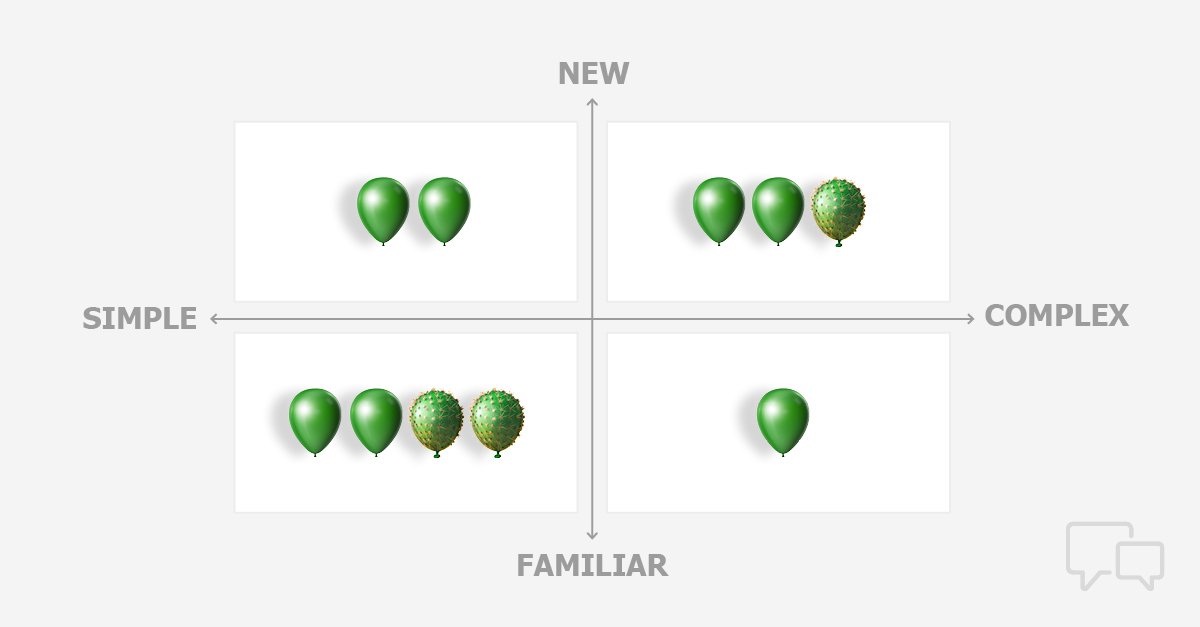
Most business content looks like…well, a lot of other business content. And that’s not a good thing.
Bullet lists and boxes, stock photos of people in contrived poses, and overly simplistic SmartArt elements seem like safe, “businesslike” choices. But none of these engage the brain enough to be memorable.
It’s no surprise, then, that only 12 percent of marketers we surveyed said their marketing materials have the highest design quality.
Your goal is to use content to influence buying decisions. But even the most compelling words won’t stick in your buyer’s mind if the accompanying visuals look just like other companies’ content.
So, how can you ensure your marketing visuals make an impact?
The show, Don’t Tell
Decision Science research has shown that people make decisions based on intuition and emotion and then justify those decisions using logic.
If you’re only using words and simple shapes, you might appeal to the logical, rational part of the brain. But when you combine your words with powerful visuals that evoke a strong feeling, you appeal to the emotional part of the brain—and that’s the true decision-maker.
When you use intense, engaging visuals, your audience processes the information faster, easier, and remembers it more precisely. They’ll enjoy your content more, making them want to return to it, remember it, and tell others all about it.
Find the Balance
In a recent study, we invited a group of participants to view two five-minute business presentations—one that used simple visuals and one that used intense visuals. Both presentations contained the same number of words and used the same script and voiceover.
For the study, we defined intense visuals as being highly edited and polished. They include bold text, images that fill the entire page, and may include a lot of animation. On the other hand, simple visuals consist of minimalist elements like shapes, text, and lines, and don’t include much animation.
The presentation that used more intense visual elements (Presentation C) was 12 percent more memorable than Presentation B. But participants liked the two presentations almost the same. They didn’t enjoy one presentation more than the other.
The point? Using a lot of intense visual elements can make your content slightly more memorable, but it doesn’t necessarily make it more enjoyable.

In a follow-up study, we compared Presentation B to a newly designed version of the same presentation that balanced both simple and intense visual elements.
This time, participants clearly had a preference. In fact, 85 percent of participants said they liked and preferred the presentation with balanced visuals (Presentation D).
Consider Complexity
As these studies show, using the right balance of simple and intense visual elements can significantly impact how people engage with, remember, and enjoy your marketing content. But how do you find the balance?
The goal is to help your audience process the information more easily. So your choice of visuals depends on the complexity of the information you’re sharing and how familiar those concepts are to your audience.

When the concepts you share are:
- Simple and familiar – use very intense visuals
- Complex and familiar – use very simple visuals
- Simple and new – use somewhat simple visuals
- Complex and new – use somewhat intense visuals
When your content is new and complex, you need somewhat intense visuals to manage that complexity. For example, animations that gradually display complex information will help your viewer’s brain process that information easily.
When you manage these four factors, you’ll help your audience engage with your content and remember the most important information.
Can Your Audience See the Difference?
Your audience is looking at your content to inform their buying decisions. But how will they remember your message if it looks the same as most other content they see?
To make your marketing content stand out, you need to think beyond boring and cliche images. Make your content easy to understand and enjoyable using intense visuals that complement the information you’re sharing. When you connect to your buyer’s emotions in this way, you ensure that your content will influence their decisions.
Get our new research report, Making Marketing Memorable, to learn more about these studies and how you can create science-backed marketing content that drives buying decisions.
In this article series, you’ll discover new research and marketing skills to guide your buyers’ decisions in your direction.
Read the other articles in the series:
- Marketing is Moving Further Down the Sales Funnel
- Why is Most B2B Marketing So Forgettable?
- How to Create a Consistently Effective Marketing Message
- The Science of Unforgettable Marketing Content
Next up: Tell a Memorable and Actionable Marketing Story





